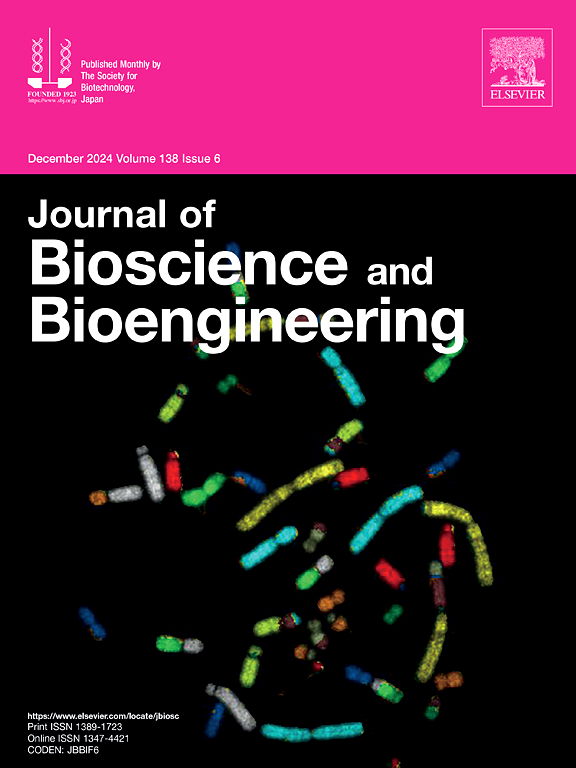基于核糖核蛋白的CRISPR/Cas9基因组共编辑在葡曲霉中的应用kawachii。
IF 2.9
4区 生物学
Q3 BIOTECHNOLOGY & APPLIED MICROBIOLOGY
引用次数: 0
摘要
在本研究中,我们建立了一种基于核糖核蛋白簇状规则间隔短回文重复序列(CRISPR)/CRISPR相关蛋白9 (Cas9)的白曲真菌Aspergillus luchuensis mut基因组共编辑方法。kawachii。目的:将单导RNA-Cas9核糖核蛋白复合物导入芦杉原生质体细胞。研究了利用Yatalase - plus -制备原生质体的条件。随后,我们采用基于核糖核蛋白的方法敲除了模型菌株NBRC 4308和工业菌株8046中编码ATP硫酰酶的sC基因,该基因赋予了硒酸盐抗性。此外,我们通过同时靶向sC与编码NBRC 4308的orotidine 5'-磷酸脱羧酶pyrG基因或编码prtR基因的蛋白酶基因转录激活因子,探索了基因组共编辑。在含硒酸盐的培养基中选择转化子,成功产生pyg -和prr -敲除菌株。同样,在含有硒酸盐的培养基上选择转化子,成功产生了编号8046的prr敲除菌株。这些结果表明,基于核糖核蛋白的基因组共编辑方法不仅适用于模式菌株,也适用于工业菌株,是一种很有前途的操作方法。kawachii。本文章由计算机程序翻译,如有差异,请以英文原文为准。
Ribonucleoprotein-based CRISPR/Cas9 genome co-editing in Aspergillus luchuensis mut. kawachii
In this study, we established a ribonucleoprotein-based clustered regularly interspaced short palindromic repeats (CRISPR)/CRISPR-associated protein 9 (Cas9) genome co-editing method for the white koji fungus, Aspergillus luchuensis mut. kawachii. To introduce the single guide RNA-Cas9 ribonucleoprotein complex into protoplast cells of A. luchuensis mut. kawachii, we investigated the conditions for protoplast preparation using Yatalase -Plus-. Subsequently, we employed the ribonucleoprotein-based method to knockout the ATP sulfurylase-encoding sC gene, which imparts selenate resistance in the model strain NBRC 4308 and the industrial strain No. 8046. Furthermore, we explored genome co-editing by simultaneously targeting sC along with either the orotidine 5′-phosphate decarboxylase-encoding pyrG gene or the transcriptional activator of protease genes-encoding prtR gene in NBRC 4308. The transformants were selected in medium containing selenate, resulting in the successful generation of pyrG- and prtR-knockout strains. Similarly, transformants were selected on medium containing selenate, resulting in the successful generation of prtR-knockout strain in No. 8046. These results demonstrate that the ribonucleoprotein-based genome co-editing method is applicable not only to the model strain but also to industrial strains, making it a promising approach for manipulating A. luchuensis mut. kawachii.
求助全文
通过发布文献求助,成功后即可免费获取论文全文。
去求助
来源期刊

Journal of bioscience and bioengineering
生物-生物工程与应用微生物
CiteScore
5.90
自引率
3.60%
发文量
144
审稿时长
51 days
期刊介绍:
The Journal of Bioscience and Bioengineering is a research journal publishing original full-length research papers, reviews, and Letters to the Editor. The Journal is devoted to the advancement and dissemination of knowledge concerning fermentation technology, biochemical engineering, food technology and microbiology.
 求助内容:
求助内容: 应助结果提醒方式:
应助结果提醒方式:


